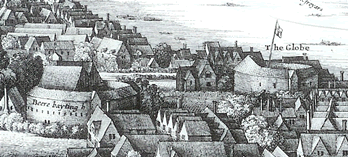Consider how these productions are employing all the techniques, technology and resources of modern theatre.

Imogen, a modernized version of Shakespeare's Cymboline, was performed at the Globe in the autumn of 2016. The production and the set completely contradicted the traditional ideas of Shakespeare's plays; from the use of physical theatre and flying actors, to the costume and props. Like most people nowadays, the actors were covered in popular brands. The opposing families wore different brands, Nike and Adidas, which was a subtle way to make their identity clear without losing the new context that was created. Moreover, the whole beginning section was told in physical theatre with music aiding the atmosphere. Physical theatre it quite a new style of theatre, and defiantly wouldn't have been used in traditional Shakespeare plays, however they intertwined this new style seamlessly with the Elizabethan language. This allowed the audience to further their understand the story and the characters, even before the events of the play happened. Furthermore, all the characters were played by their written genders. For a woman to have the lead part was controversial for Shakespeare to have done in his era, but it would have never been performed by a women, instead a young boy would have taken on the role. The women of the play wore shorts, hoodies and didn't confine to the stereotypical ideas of women, which was how they were usually presented in most plays written in the 1600s. The one aspect of the play which matched Shakespearian style, was the stage. In a remodelled Globe Theatre, the play relied on daylight for lighting just like they would in the 1600s.
One of the biggest modernization of Twelfth Night, was the fact that they changed Malviolo to Malviola. The biggest effect of this was the fact that it had no effect on the play. It showed how in a lot of roles, gender doesn't matter because the emotion people feel and the way they react to events isn't determined by their gender, but by who they are. I found this very interesting when watching twelfth night, because there was nothing she said that I felt was out of place. Unlike Shakespearian plays in Elizabethan times, where the set was simple and the lighting was determined by the sun; the set of this production was intricate, detailed and life like. It constantly changed from scene to scene so that as an audience member, it was easy to surround yourself in the world of the play. It differed greatly from Shakespeare plays, especially the way the women were presented. Nowadays showing skin isn't a problem, but in the 1600s if a woman were to appear on stage in a swimming costume, as one of the actors did, the would be shunned. This elevated the play into modern day and once I was used to the old fashioned language which was still intact, it made it easy to forget that this play was written 100s of years ago.



